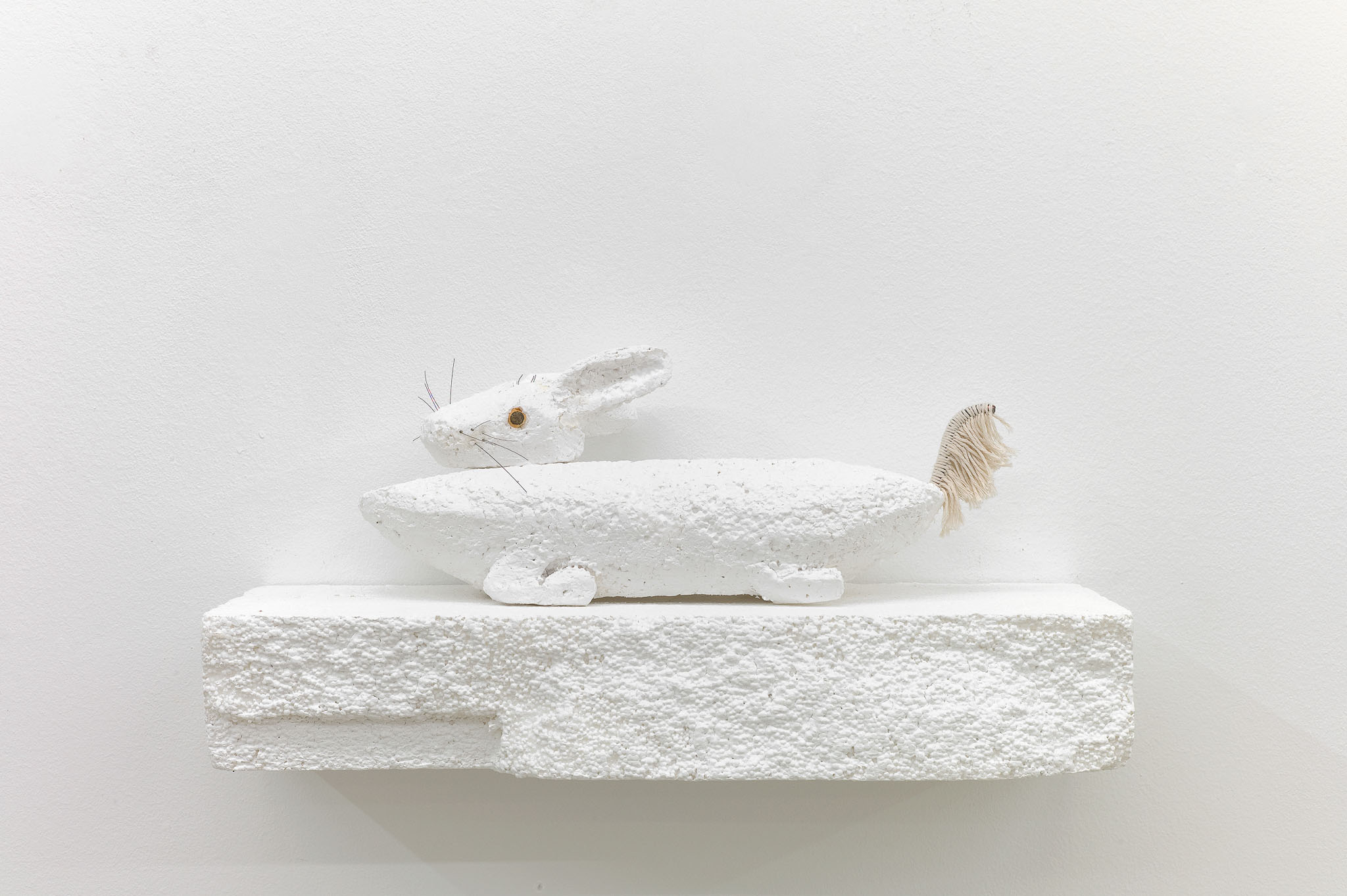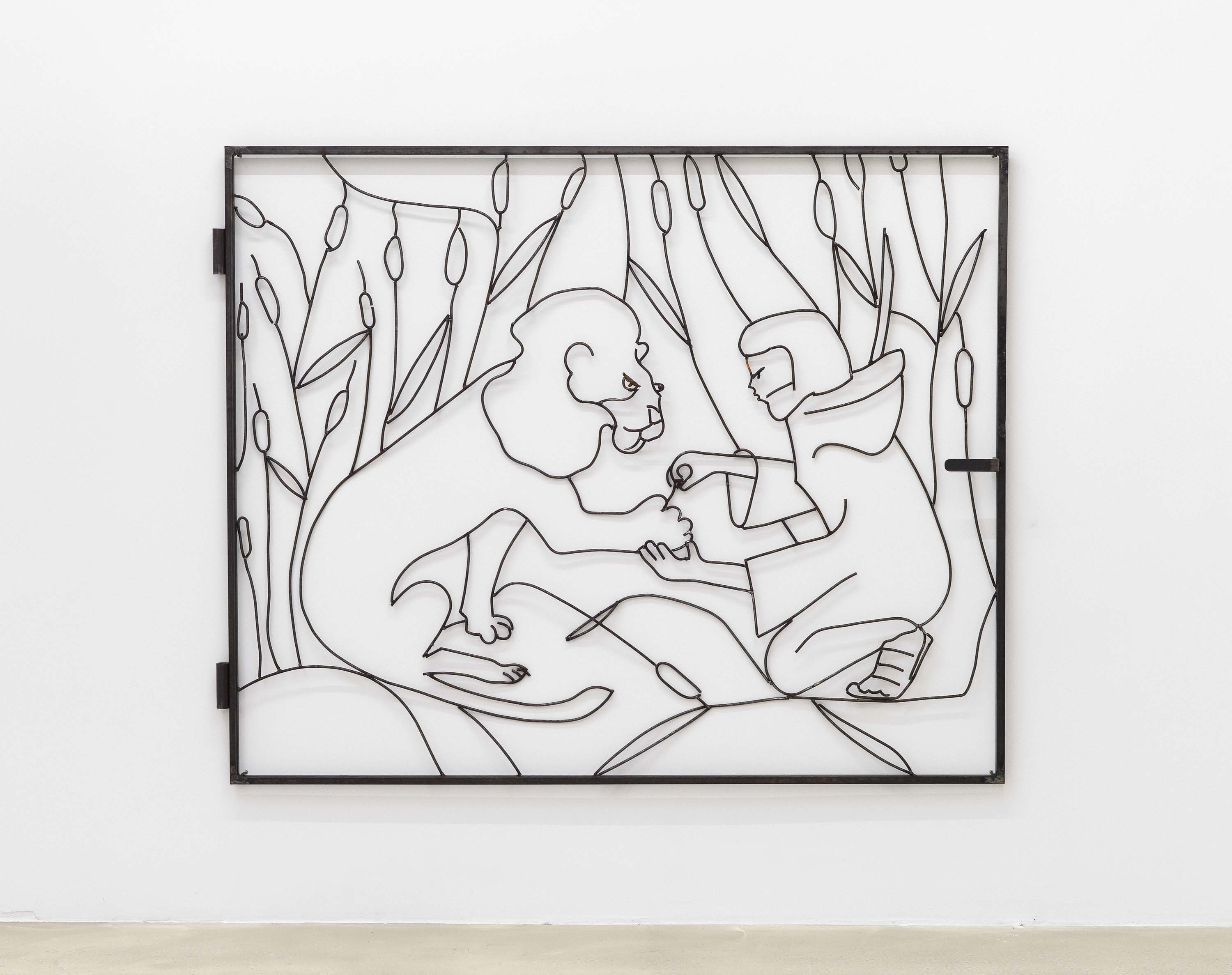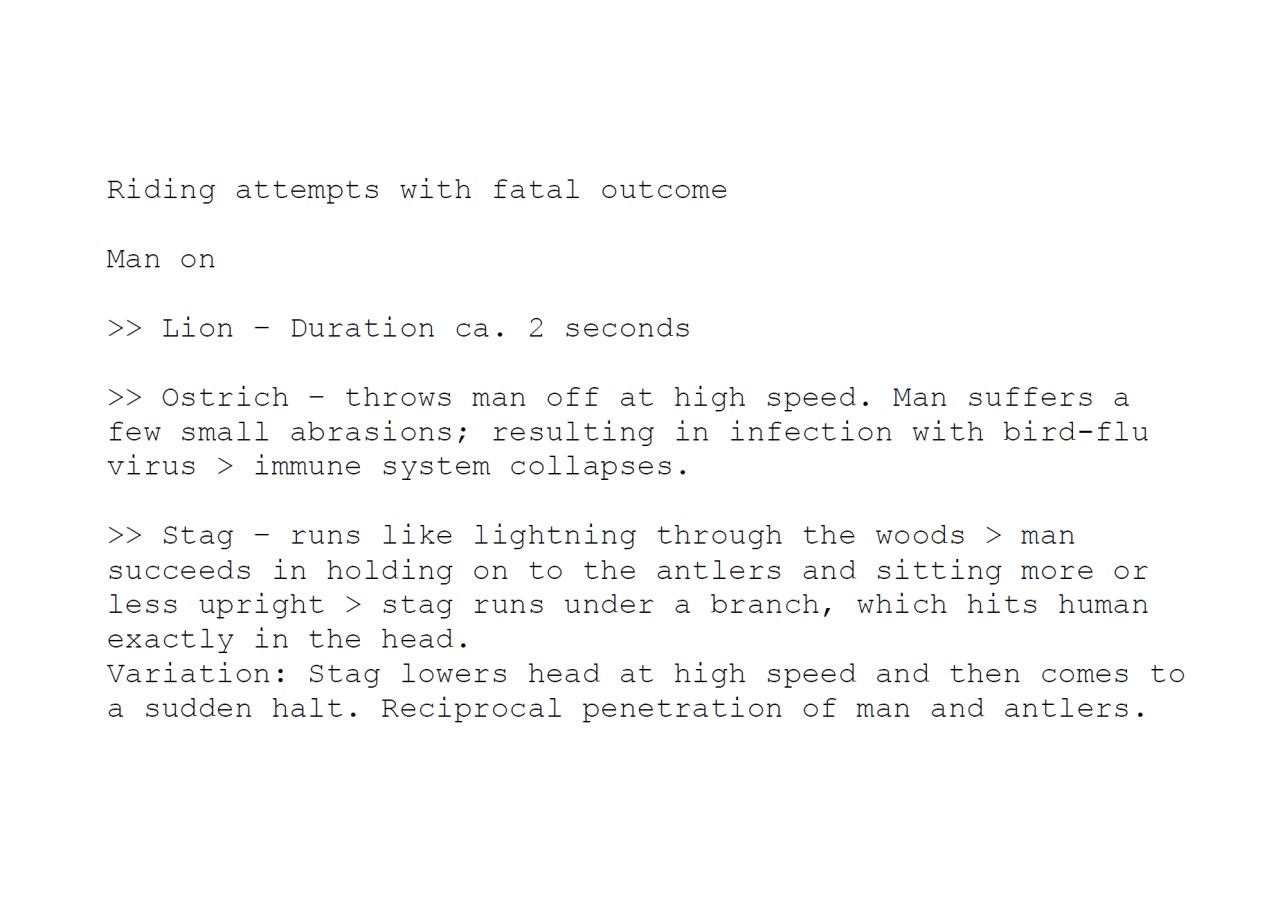- Dates3 September 2016 - 29 October 2016
- Artists
Lin May Saeed (*1973, DE) addresses the historic developments of human-animal relations in a monothematic approach. „St. Jerome and the Lion“ is her first exhibition at Nicolas Krupp. Using a wide range of media in sculpture, bricolage, drawing and text, her work presents us with fictional and real incidents from the history of the coexistence of humans and animals.
These range from peaceful-private scenes with pairs of figures through imaginary mythic-utopian spaces in which the boundaries between the different species are still permeable, to hilarious and hopeless situations of rivalry between humans and animals. Lin May Saeed´s practice contains references to non-European cultural connections, as well as allusions to the animal rights movement which emerged originally in the Anglo-American areas in the mid 1970s, and from which, besides internationally active groups, Human-Animal studies has emerged as an interdisciplinary field of research. In her sculptural works, so-called poor materials are employed such as polysterene, gypsum, paper, tool steel and found objects, which are combined and partly painted.
Works of Lin May Saeed were recently shown at Bergen Kunsthall, Norway, and Jacky Strenz, Frankfurt/Main, and are currently presented at Berlin Biennale IX. In 2015 she was Visiting Artist at the Art Institute of Chicago. The sculptress with arabic-jewish roots lives in Berlin.
-

Arrival of Animals II / Ankunft der Tiere II
Lin May Saeed2007Acrylic on canvas
70 × 100 cm -

The Liberation of Animals from their Cages III
Lin May Saeed2008Coated and painted styrofoam, wood, polyester wool
70 x 100 x 32 cm -

The Liberation of Animals from their Cages XVII
Lin May Saeed2015Tool steel and lacquer
196 × 104 × 7 cm
by Aoife Rosenmeyer, Art in America*
Lin May Saeed (b. 1973) is as much an animal rights advocate as an artist. Despite the progressive perspectives put forth by scholars like Donna Haraway in her book Companion Species Manifesto: Dogs, People, and Significant Otherness (2003), empathy with animals remains rare in art. When Pierre Huyghe uses dogs and monkeys as performers in his exhibitions, the animals’ welfare is not the central issue. As a society, we rely on animals but are largely—often willfully—ignorant of them as fellow creatures. Saeed approaches the subject with endearing and persuasive lightness, perhaps to keep us from turning away from the discomfort it can create.
This exhibition, “St. Jerome and the Lion,” ranged from wall-hung gatelike pieces with figurative metalwork to painted polystyrene reliefs to mixed-medium sculptures to a large backlit painting with cutout silhouettes. The motifs in the interspecies scenes depicted throughout derive from the Western world and the German-born artist’s Jewish-Arab heritage. The classical Greek calf bearer appears in one of the gate works, The Liberation of Animals from their Cages XVII / Moschophoros (door), 2015. Here, Moschophoros is reimagined as a masked animal-rights activist—akin to the heroes of Matt Miner and Javier Sanchez Aranda’s comic-book series Liberator—thus subverting the calf’s fate. Another gate work, this one horizontal and serving as the exhibition’s title piece, shows St. Jerome removing a thorn from a lion’s paw. In contrast to these harmonious scenes, a cartoonlike drawing on canvas, Ankunft der Tiere II (Arrival of the Animals II, 2007), pictures several animals taking revenge as they attack two women clad in fur coats.
Imprisonment and liberation are recurring themes. A sculpture titled Yahya, perhaps evoking the Islamic prophet John the Baptist, consists of a graphite-blackened polystyrene-and-jute wildcat standing atop a wooden crate—one of several works in which creatures are shown commanding their cages. In the striking twenty-one-foot-wide Freier Markt (Free Market, 2007)—the aforementioned painting with cutouts lit from behind—birds in cages and a man, an elephant, and a camel tethered to heavy weights are portrayed as if being offered for sale. Other creatures around them seem more alien than earthly. The figuration is spare and the palette reduced, producing an airy and diagrammatic image. The enslavement of animals is depicted as equivalent to that of humans, and one infers that the abolition of both is necessary for an enlightened society.
Saeed’s use of “poor” materials like cardboard, cheap wood, and aluminum foil in many of the sculptures reinforces the deliberately innocent mood of her tableaux, as if she wants her message to sneak in under the radar. The works have cross-cultural resonance, underlining common histories of humans interacting with animals and opening the door for our interspecies narratives to evolve.
*read original Art in America article, 21 November 2016
Contemporary Art Daily, 2 November 2016

Lin May Saeed
Lin May Saeed (1973-2023) is both an advocate for animals and an artist. Despite progressive perspectives, empathy for animals is rarely found in visual art. We depend on animals as a society, and yet, we mostly ignore them, and often deliberately, as comrades. Saeed is approaching this theme with a compelling and convincing lightness, maybe to keep us from turning away from the uneasiness it can provoke.















